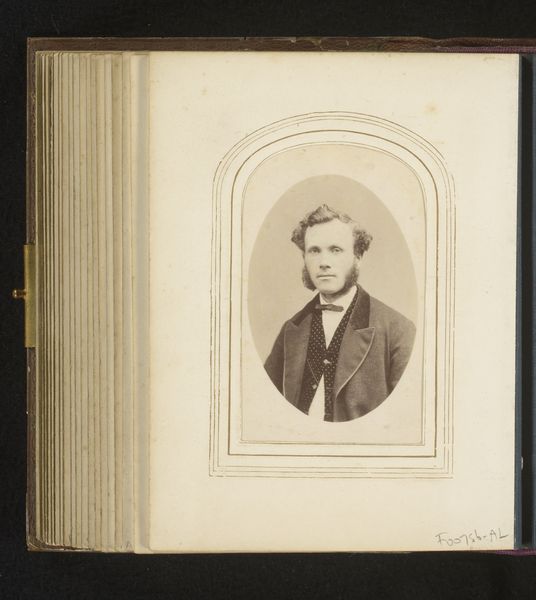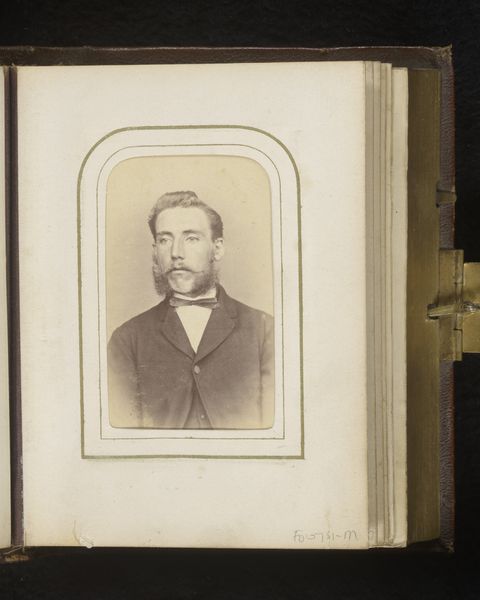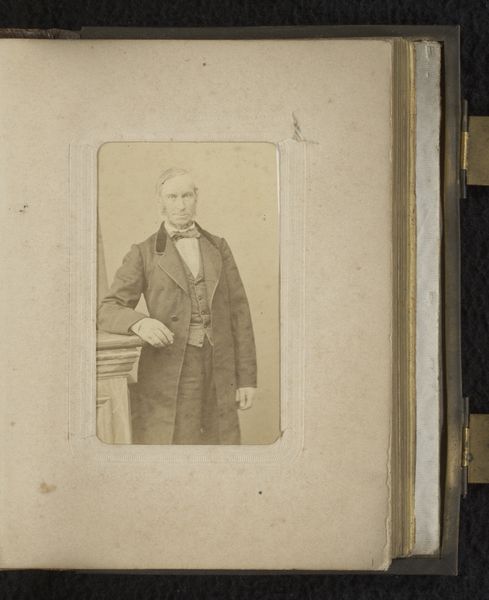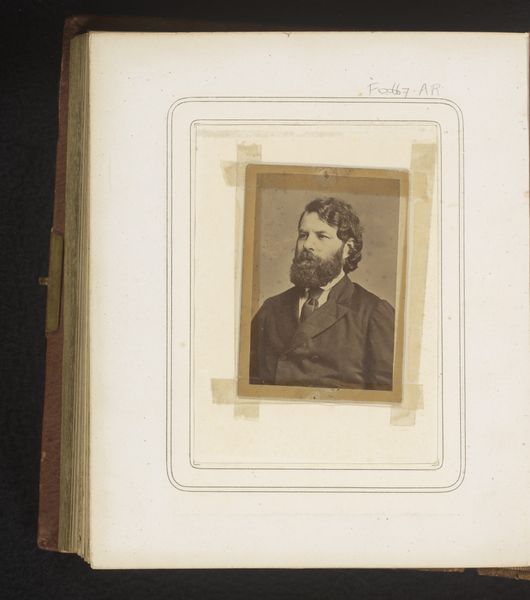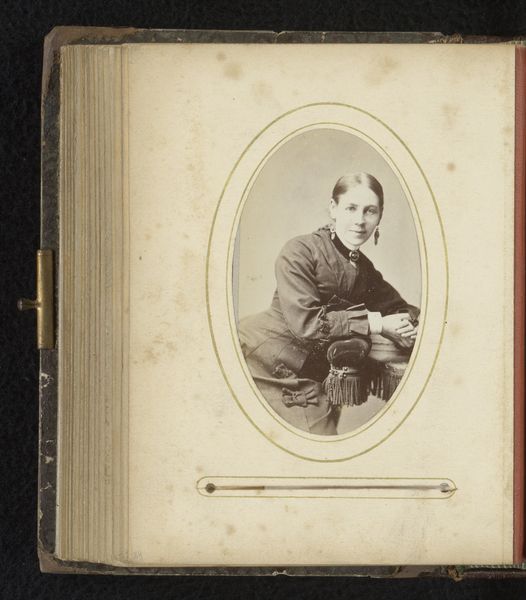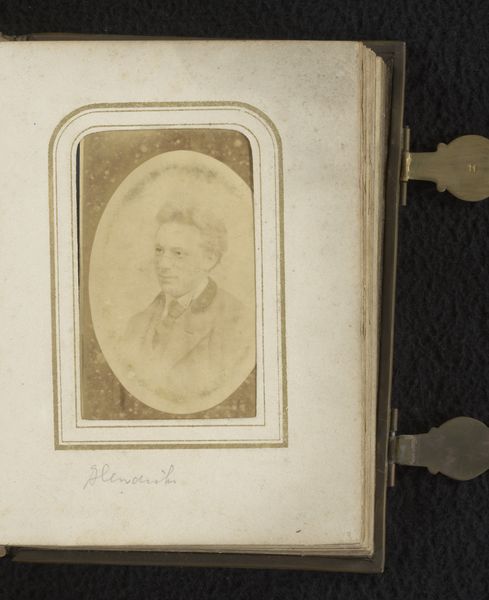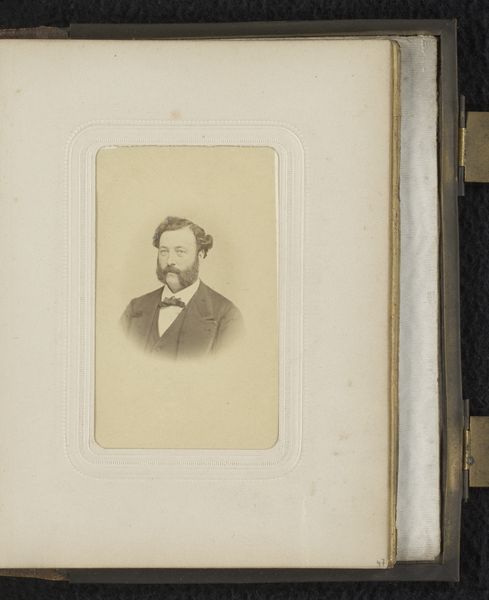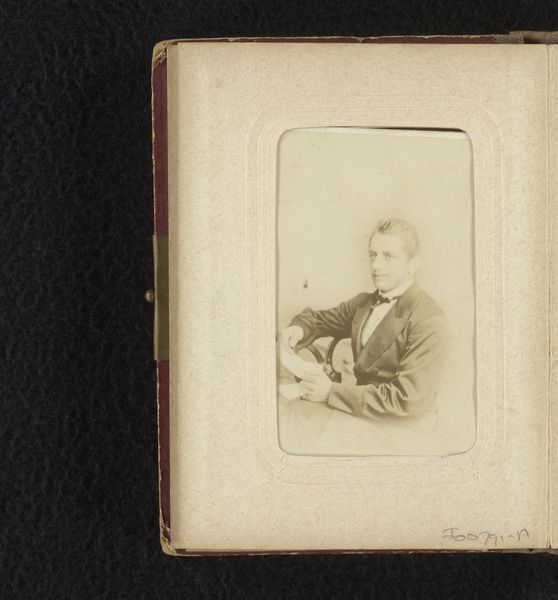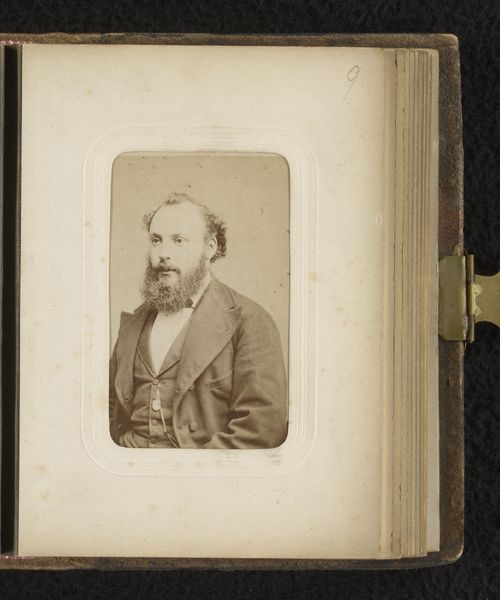
photography
#
portrait
#
photography
#
genre-painting
#
watercolor
#
realism
Dimensions: height 102 mm, width 61 mm
Copyright: Rijks Museum: Open Domain
Curator: What a fascinating image. This is an albumen print titled "Portret van een man met baard," placing its creation somewhere between 1860 and 1900. Editor: It's a captivating portrait, somber and quite muted in its tones. The man seems serious, almost stern, and the detail captured despite its age is impressive. It feels like looking into a bygone era. Curator: Exactly. The albumen process was quite popular then, producing a smooth surface from egg whites coating the paper. These prints allowed for much sharper details than previous methods. I wonder, what was the social standing of photography at the time? Was it truly for everyone? Editor: Photography in that period was democratizing, relatively speaking, although initially a pursuit primarily for the wealthy or those associated with scientific advancement. Studios opened, however, creating access to a wider public wanting to document their lives, to create visual records for remembrance, self-fashioning, or social climbing. Curator: Thinking about the materials used - the albumen, the paper, the chemicals, the whole production – it all implies a specific economic model and labor dynamic. These portrait studios were not solely reliant on artistry but industrializing craft. How did their pricing compare with having a portrait painted? Editor: The economic advantage was considerable. Photographic portraiture allowed even the emerging middle class to visually manifest their presence, to participate in constructing an image of the family, and contribute to the democratization of representation. Consider the role of the photo album; how did the display of images in the home shape the identity of families, communities, nations? Curator: The album becomes another curated space! I'm starting to imagine all these little print factories, churning out image after image. Editor: Absolutely, and while mass produced it still carries an undeniably compelling intimate and lasting trace of its historical moment. Curator: Seeing it within the history of photography brings so many layers to the surface, it has helped give this image so much more depth! Editor: For me too! The process is inextricably linked to the subject in capturing more than meets the eye.
Comments
No comments
Be the first to comment and join the conversation on the ultimate creative platform.
